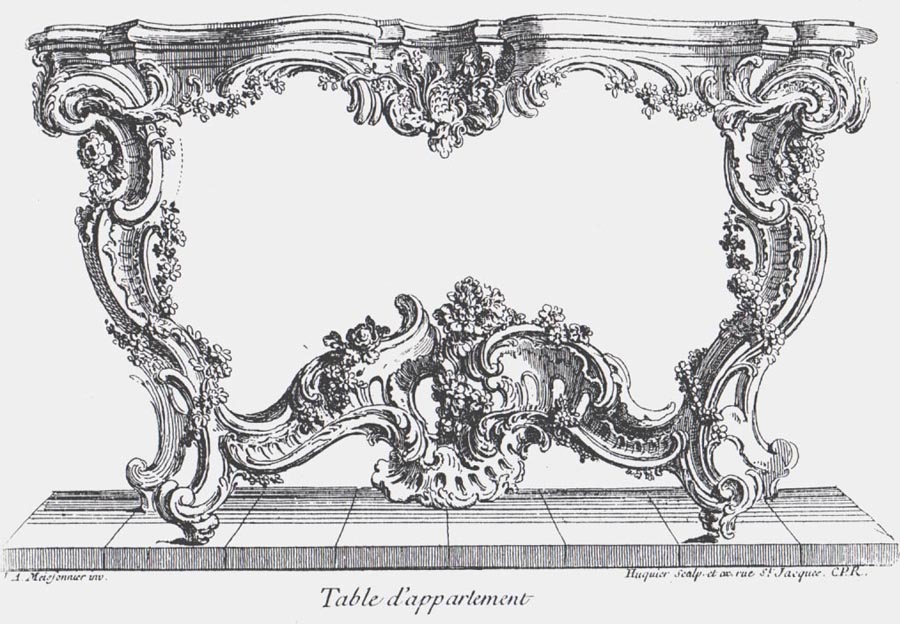
"Sensuous impulse" is one of two terms coined by Immanuel Kant in his philosophy of aesthetics, specifically relating to the way in which we perceive something. If an object is created with only the sensuous impulse in mind, it is purely aesthetic, created only for beauty. Conversely, if an object is created with only the "formal impulse" in mind, it is purely logical, or functional.
The Rococo movement of the eighteenth century is perhaps the peak of sensuous impulse in design. Its elaborateness was a simple by-product of the wealth of the burgeoning upper class in France, and the prolonged period of peace the country experienced during that time. Items with such elaborate ornamentation and frivolous detail, such as the "table d'appartement" by Juste-Aurèle Meissonier (pictured above), could be easily afforded, and were considered an outwards expression of one's wealth and security. In modern times, however, as humanity realises the world is no longer brimming with the natural resources it was in past years, conservatism and sustainability is the predominant trend in design, appealing to our formal impulse. Therein lies a question, though: in a modern world in which form follows function, is sensuous impulse in design relevant, or even appropriate? The answer is yes, and though sustainability and conservation of natural resources are dominant factors in modern design, the world needs things that appeal to the sensuous impulse. Clothing, for example, is designed primarily with aesthetics in mind, and is a large component of self expression. Beautiful objects keep society happy; functional objects keep society running.
The Rococo movement of the eighteenth century is perhaps the peak of sensuous impulse in design. Its elaborateness was a simple by-product of the wealth of the burgeoning upper class in France, and the prolonged period of peace the country experienced during that time. Items with such elaborate ornamentation and frivolous detail, such as the "table d'appartement" by Juste-Aurèle Meissonier (pictured above), could be easily afforded, and were considered an outwards expression of one's wealth and security. In modern times, however, as humanity realises the world is no longer brimming with the natural resources it was in past years, conservatism and sustainability is the predominant trend in design, appealing to our formal impulse. Therein lies a question, though: in a modern world in which form follows function, is sensuous impulse in design relevant, or even appropriate? The answer is yes, and though sustainability and conservation of natural resources are dominant factors in modern design, the world needs things that appeal to the sensuous impulse. Clothing, for example, is designed primarily with aesthetics in mind, and is a large component of self expression. Beautiful objects keep society happy; functional objects keep society running.
No comments:
Post a Comment